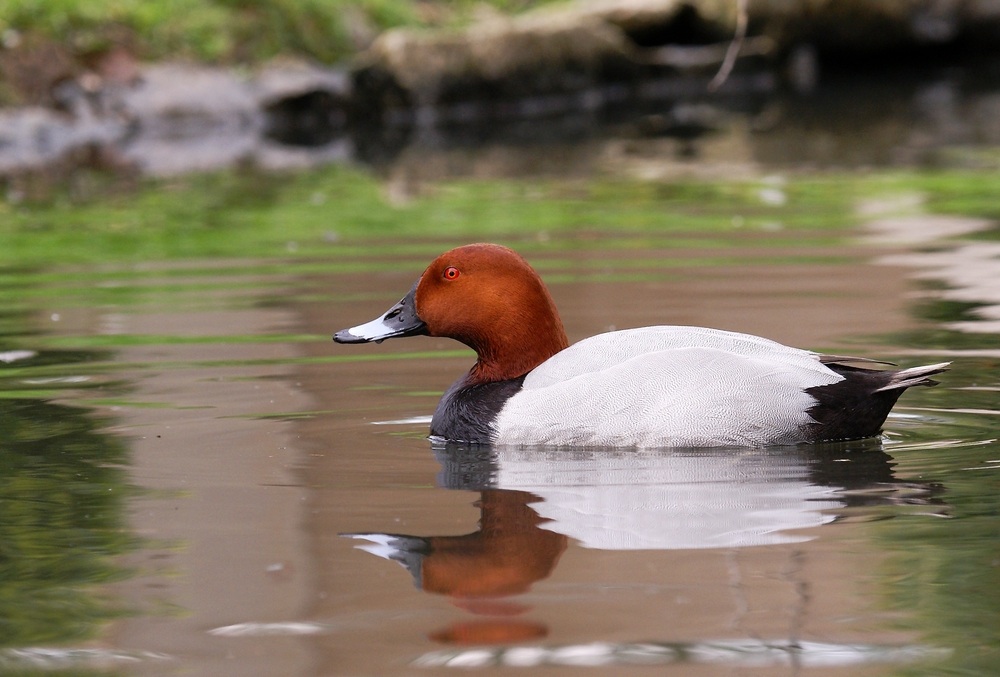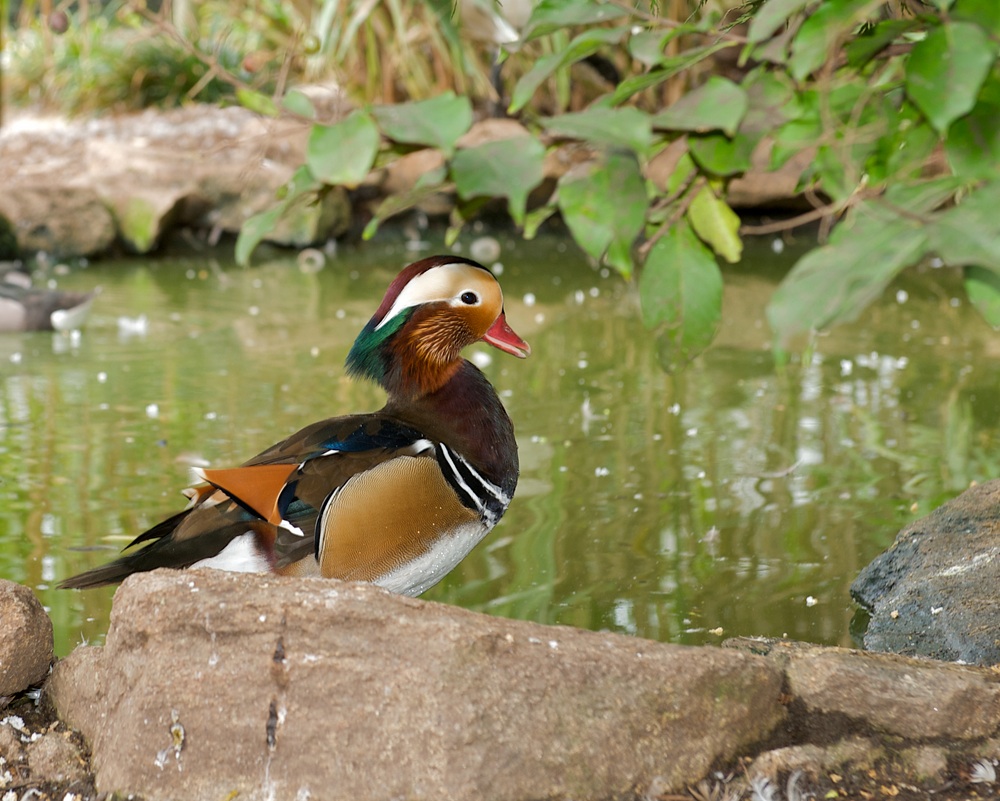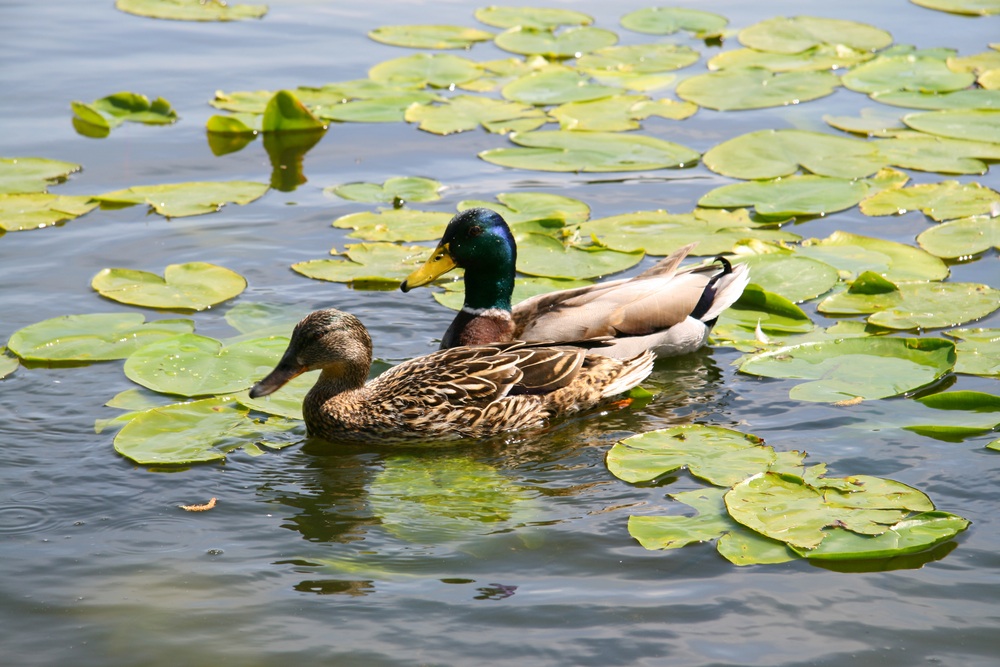Ponds for waterfowl

Various waterfowl which can be kept satisfactorily on a fairly small pond, and with modern materials, so it is possible to construct a pond quite easily, although some digging will be inevitable. Depending on factors such as the size of the pond and access to the site, it may be worthwhile hiring a small digger for this purpose.
You will need to consider what to do with the spoil however, and if you do not want to dispose of this in a skip, then the solution may be to use it to form a backdrop to the pond itself. You may even be able to use a bank of this type to disguise a pump and filtration system, screening this from view.
Safety considerations are vital in the design of garden ponds, especially if you have or are visited by young children who could fall into the water. It is also important to consider the safety of the waterfowl themselves, as they could be vulnerable to attacks by cats and foxes, which are present today even in the centre of many major cities. Although the idea of a pond with waterfowl is appealing, it may therefore be better to incorporate this within an aviary setting.
Types of pond

Garden ponds today can be created either from a preformed, moulded unit which simply fits into a hole in the ground, or by using a special pond liner. The toughest lining material is comprised of butyl rubber, which perhaps not surprisingly is also the most expensive, but especially with the waterfowl, it will be false economy to buy a cheaper option which could be punctured by their claws.
Liner ponds are obviously more flexible in design terms, as lengths of this liner can be joined together successfully, and they can therefore be larger in size than most preformed ponds as well. When comparing costs, you can work out the area of the liner which will be required by calculating twice the maximum depth figure and then adding this to both the width and length measurements.
An underlay is also recommended in most cases, to absorb any sharp projections remaining in the soil, and to bed it down properly. It is important to fill a liner pond keeping the edges stretched and weighted down, to prevent creasing. The surplus liner present around the edges can be disguised quite easily, under paving slabs for example.
Should you wish to house other birds alongside the waterfowl in an aviary, then be sure to provide a shallow area where they can bathe in safety. During the warmer months of year, birds such as robin chats (Cossypha species) which feed on flying insects and so are often found in close proximity to water will be drawn here, particularly in the late afternoon and early evening, to catch midges. If you have a waterfall, it is better to have this running down a series of shallow steps rather than a vertical torrent, to give the birds better access.
Planting

Although it is usually not possible to maintain a well-planted pond with waterfowl, unless it is very large, careful planting around the perimeter is feasible, and a surprisingly wide range of plants can be grown here. This can create a very attractive appearance. If the pond itself is made with a pond liner however, then choose carefully, because some reeds and rushes have very invasive root systems, which are quite capable of puncturing a liner, causing a leak. It is therefore better to grow them in special containers, checking these annually in case the pots are becoming overcrowded, to ensure that the pot has not split because of the root mass.
If you have a damp area around the pond, there is also the potential to grow a host of different plants, depending on your climate. These may range from colourful marsh marigolds to the bizarre but often strikingly patterned insectivorous plants from North America which are normally found in this type of habitat. In order to prevent these areas from being trampled by the waterfowl, especially at first, you need to provide an easier point of exit from the pond. It may even be worth partitioning off the planted areas until they have become established.
Other plants which grow well and provide good cover around the sides of the pond or watercourse include a wide variety of ferns. Ducks may decide to nest under larger plants, where they will be largely hidden from view.
A bog garden will also serve as a reservoir during periods of heavy rain, when the pond is liable to overflow. At other times of the year, you will need to keep the area moist, ensuring that the plants do not dry out. A water-butt attached to the aviary structure will be useful in this respect, especially for watering these plants.